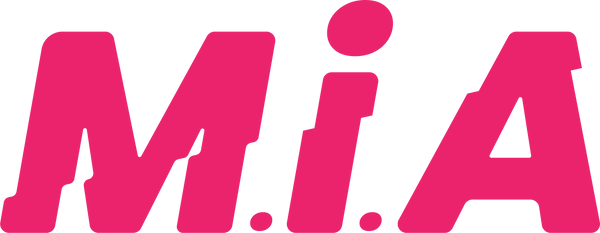In today's fast-paced digital era, the print on demand industry has emerged as a lucrative and highly adaptable business model, perfect for creative entrepreneurs seeking to capitalize on the power of customization and minimal overhead costs.
In this article, we will provide a comprehensive guide to starting a successful print on demand business, equipping you with the essential knowledge and tools to turn your creative passions into a thriving enterprise.
1. What is Print on Demand Business Model?

Print on demand is a business model where products are created and customized based on individual customer orders, rather than being mass-produced in advance. It is a highly adaptable approach that often incorporates digital printing technology to produce unique, tailored items such as Shirts, Masks, Caps, and Bags etc.
Some advantages of the print on demand model include reduced inventory costs, lower financial risk, and the ability to quickly respond to changing market trends. Additionally, this model allows businesses to cater to niche markets and focus on delivering exceptional customer experiences through personalization.
Numerous successful print on demand businesses have emerged in recent years, including popular platforms like Printful, Printify, and Teespring. These platforms have enabled entrepreneurs to create a wide variety of customized merchandise, from t-shirts and hoodies to phone cases and wall art, catering to diverse consumer interests and preferences.
2. How to Choose Niche and Target Audience?

Begin by considering your own passions, hobbies, or areas of knowledge. Focusing on a niche that genuinely interests you will keep you motivated and enable you to create more authentic, engaging designs.
Investigate potential niches by examining market trends, consumer demand, and competitor offerings. Look for gaps in the market or underserved audiences that present opportunities for your print on demand business.
Determine the level of competition in each niche by researching existing businesses and products. A healthy level of competition can be a positive sign, but avoid overly saturated markets where it may be difficult to stand out.
Assess the potential profit margins for each niche by considering factors such as production costs, pricing strategies, and market demand. Choose a niche that offers a balance between profitability and your own personal interests.
3. How to Find the Right Print on Demand Platform?

Numerous print on demand platforms have emerged in recent years, offering a range of services and features to suit the diverse needs of entrepreneurs.
Ensure the platform offers a wide range of products and customization options that align with your niche and target audience. Also, Look for platforms that use high-quality printing techniques and materials, ensuring your designs are showcased to their fullest potential.
Check if the platform easily integrates with popular e-commerce platforms and marketplaces like Shopify, WooCommerce, or Etsy, making it easier to manage your online store. Evaluate shipping options, costs, and delivery times to ensure a seamless customer experience.
4. Collaborate with designers or using Design Tools

If you lack design skills or simply want to expand your creative horizons, consider collaborating with professional designers or using online design tools. Platforms like Fiverr and Upwork offer access to freelance designers with a wide range of skills and expertise.
Alternatively, you can use design tools such as Canva, Adobe Illustrator, or Affinity Designer to create your own high-quality designs. These tools offer user-friendly interfaces, along with a variety of templates, resources, and tutorials to help you develop your design skills and bring your ideas to life.
5. Set Up Your Online Store

Selecting the right e-commerce platform for your online store is essential for the success of your print on demand business. Popular platforms like Shopify, WooCommerce, and BigCommerce offer a range of features, tools, and integrations that cater to the needs of different entrepreneurs.
1. Integrating your print on demand platform with your store
Once you've chosen an e-commerce platform, the next step is to integrate your print on demand service with your online store. This will enable you to automate the process of receiving orders, printing products, and fulfilling shipments. Most print on demand platforms offer easy-to-use plugins or apps that can be installed directly onto your e-commerce platform.
2. Optimizing your store for search engines and user experience
An Optimized Online Store is crucial for attracting customers and driving sales. To improve your store's visibility in search engine results and enhance the user experience, consider the following tips:
Use clear and descriptive product titles and descriptions that include relevant keywords to improve search engine optimization (SEO). Optimize your product images by using high-quality visuals, appropriate file sizes, and descriptive alt tags. Create an intuitive and user-friendly site structure, making it easy for visitors to navigate and find products.
Offer a seamless and secure checkout process to minimize cart abandonment and increase conversion rates. Incorporate customer reviews and testimonials to build trust and credibility with potential buyers.
6. How To Price Your Products

Pricing your print on demand products is a critical aspect of your business strategy, as it directly impacts your profitability and brand positioning. Consider the following factors when determining your prices:
1. Cost of goods sold (COGS): Calculate the total cost of producing each item, including base prices, printing fees, and any customization costs.
2. Shipping and handling fees: Take into account the costs associated with shipping and fulfillment to ensure these expenses are covered in your pricing.
3. Target profit margin: Decide on a target profit margin that will allow you to cover expenses, invest in business growth, and generate a reasonable income.
4. Competitor pricing: Analyze your competitors' pricing strategies to understand market expectations and identify opportunities for differentiation.
5. Perceived value: Consider the perceived value of your products, as higher-quality designs and materials may justify premium pricing.
6. Target audience: Understand the budget constraints and spending habits of your target audience to ensure your pricing aligns with their expectations.
Conclusion
In conclusion, starting a successful print on demand business requires a comprehensive understanding of the industry, a well-defined niche and target audience, high-quality designs, and an optimized online store.
Ready to explore some amazing Print On Demand Products? Head over to our website now and browse our diverse and unique collection, tailored to suit your style and preferences.

